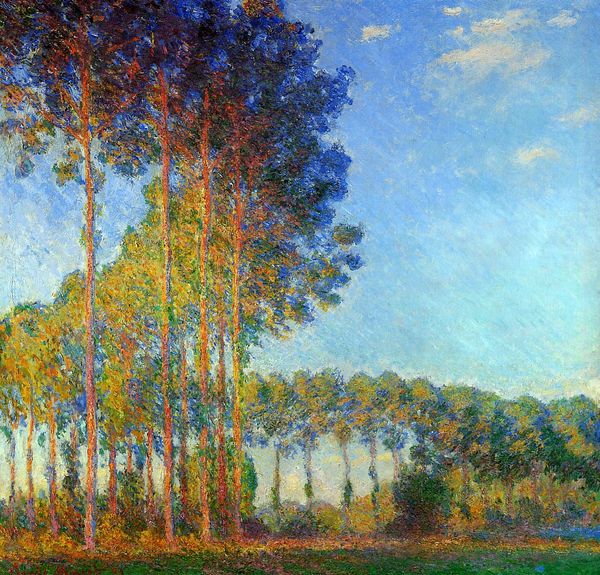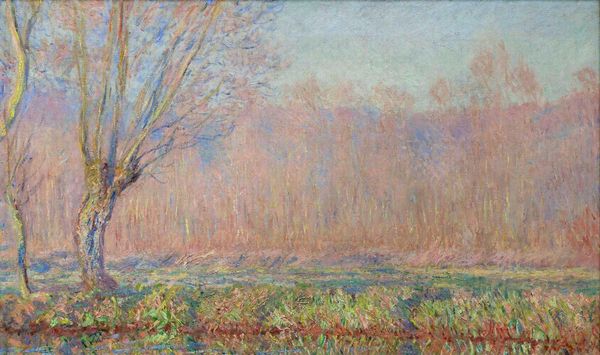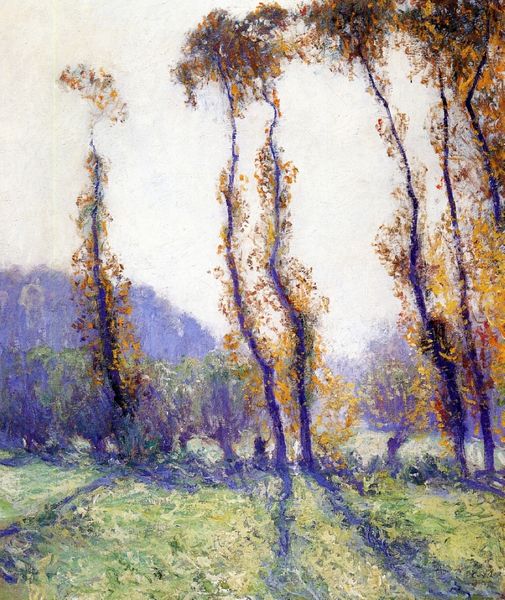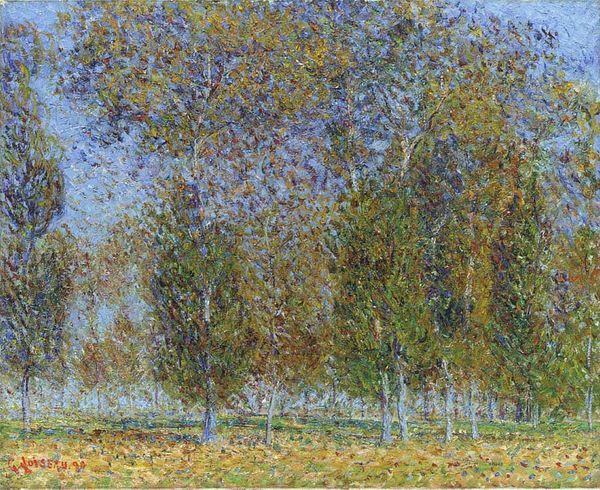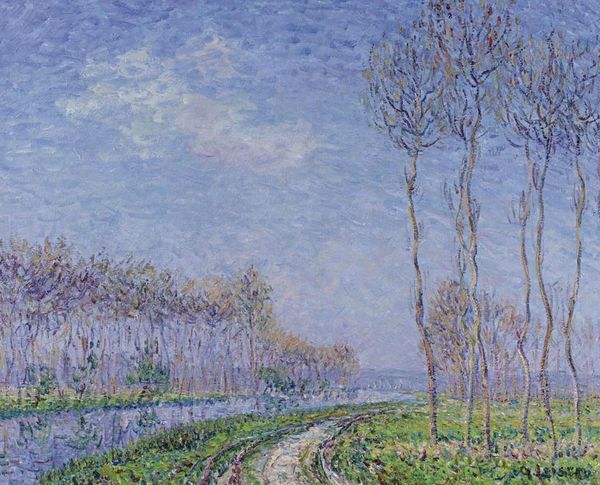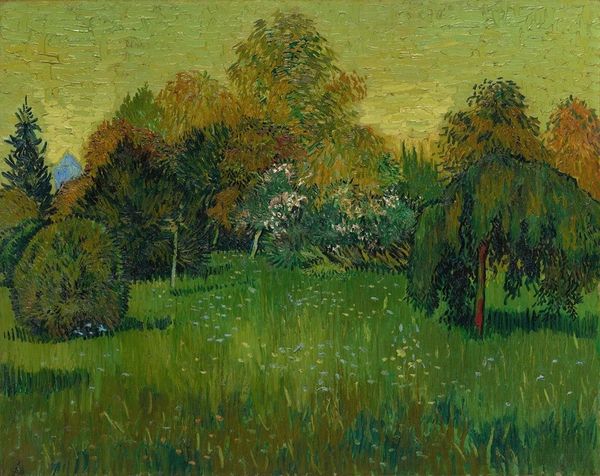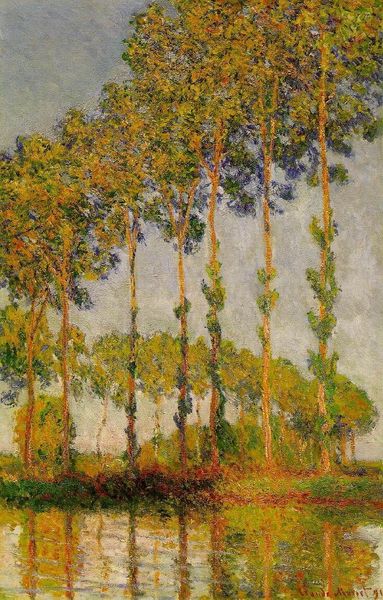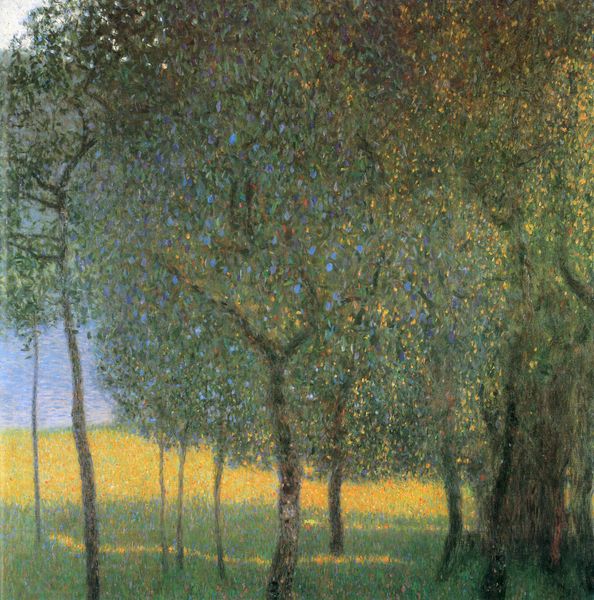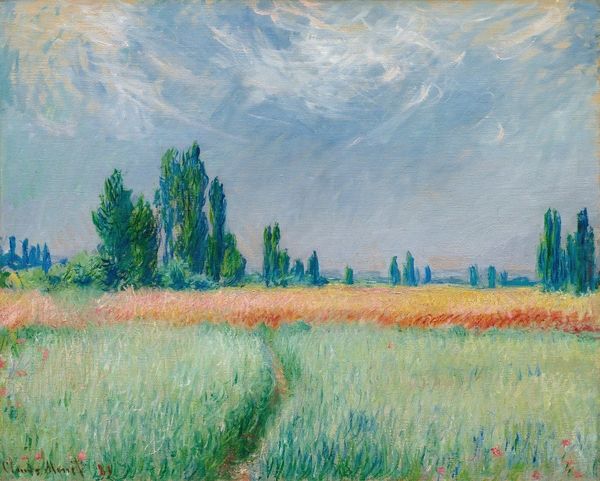
painting, plein-air, oil-paint, pastel
#
painting
#
impressionism
#
plein-air
#
oil-paint
#
landscape
#
impressionist landscape
#
pastel
#
modernism
Copyright: Public domain
Claude Monet created "Meadow at Limetz" with oil on canvas, a material and technique that became increasingly accessible during the 19th century due to industrial manufacturing. Monet's quick, broken brushstrokes, capturing fleeting moments of light, were only possible because of innovations like pre-mixed paints in tubes, mass-produced and available for purchase. This removed the labor-intensive process of grinding and mixing pigments, democratizing access to art-making. "En plein air" became popular, artists could easily transport their materials outside, and the Impressionists were born. The very texture of the painting reflects this change. The visible brushstrokes and dynamic composition speak to a direct engagement with the landscape, a deliberate decision to represent the world as perceived. Monet embraced the manufactured materials of his time, transforming them into something deeply personal and evocative. Ultimately, Monet's "Meadow at Limetz" reminds us that art is always embedded in its material and social context. It encourages us to reflect on the relationship between artistic expression, labor, and the broader forces of production that shape our world.
Comments
No comments
Be the first to comment and join the conversation on the ultimate creative platform.

